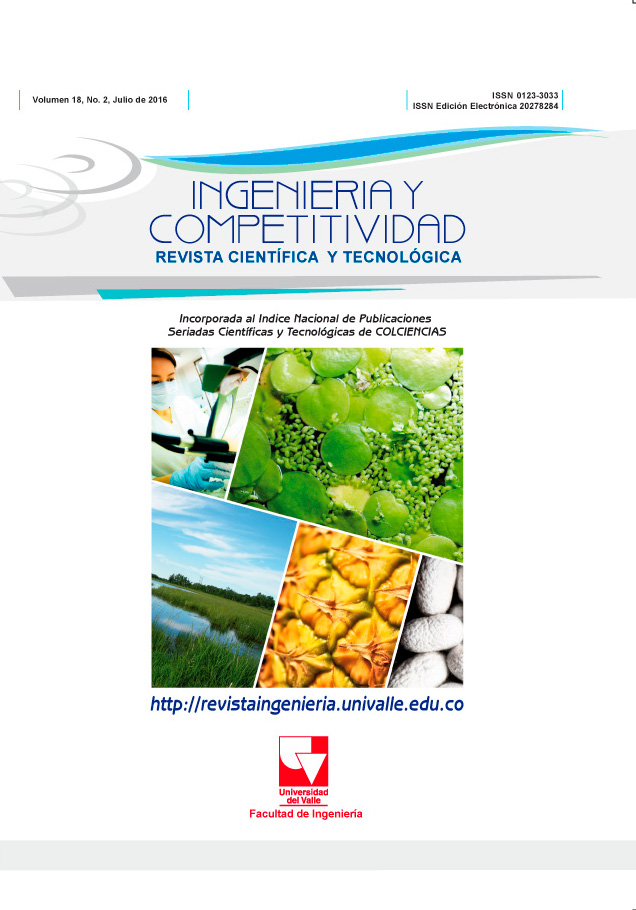Emisiones de gases de efecto invernadero en un sistema descentralizado de tratamiento de aguas residuales domésticas: filtro anaerobio + humedal construido
Palabras clave:
Filtro anaerobio, gases efecto invernadero, humedales construidos, sistemas descentralizados de tratamiento de aguas residuales.Contenido principal del artículo
En este estudio se midieron las emisiones de gases de efecto invernadero i.e. CH4, CO2 y N2O, producidas en un sistema descentralizado de tratamiento de aguas residuales municipales (SDST). El sistema consistió de un filtro
anaerobio (UAF) seguido de dos humedales construidos operando en paralelo plantados con Heliconia sp L. (HCW) y C. papyrus. (PCW). Las emisiones medidas en el UAF(1.8 - 8.9 g.m-2.d-1 CO2; 8.3 y 45 g.m-2.d-1 CH4) fueron
mayores a las medidas en HCW (-5.1 y 5.5 gCO2.m-2.d-1; 10 y 556 mgCH4.m-2.d-1; -4 and 40 mgN2O.m-2.d-1) y PCW( -0.85 to 6.5 gCO2.m-2.d-1; 2.3 and 1590 mgCH4.m-2.d-1; -7 y 12 mgN2O.m-2.d-1). Las pruebas estadísticas indicaron que para el mismo fotoperiodo (día o noche) no hubo diferencias entre HCW y PCW. Adicionalmente, las variaciones de GEI pudieron ser explicados por la temperatura del agua , el fotoperíodo, la presencia de NH4+ y la concentración de OD. El incremento en temperatura del agua estimula la producción de GEI. Igualmente durante el fotoperiodo el secuestro de CO2 y CH4 fue favorecido. La presencia de NH4+ y cambios en el OD en HCW y PCW estimularon la producción de N2O. En conclusión, los resultados indicaron que el sistema descentralizado fue una fuente neta de GEI emitiendo 0.7 kg CO2eq. Kg CODrem.
Downloads
Los autores que publican en esta revista están de acuerdo con los siguientes términos:
Los autores ceden los derechos patrimoniales a la revista y a la Universidad del Valle sobre los manuscritos aceptados, pero podrán hacer los reusos que consideren pertinentes por motivos profesionales, educativos, académicos o científicos, de acuerdo con los términos de la licencia que otorga la revista a todos sus artículos.
Los artículos serán publicados bajo la licencia Creative Commons 4.0 BY-NC-SA (de atribución, no comercial, sin obras derivadas).

